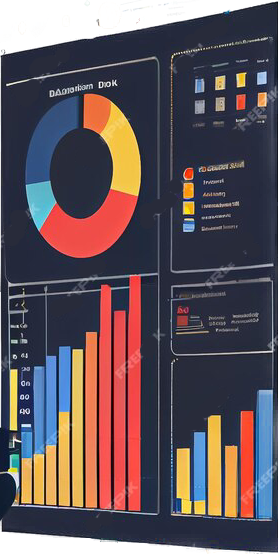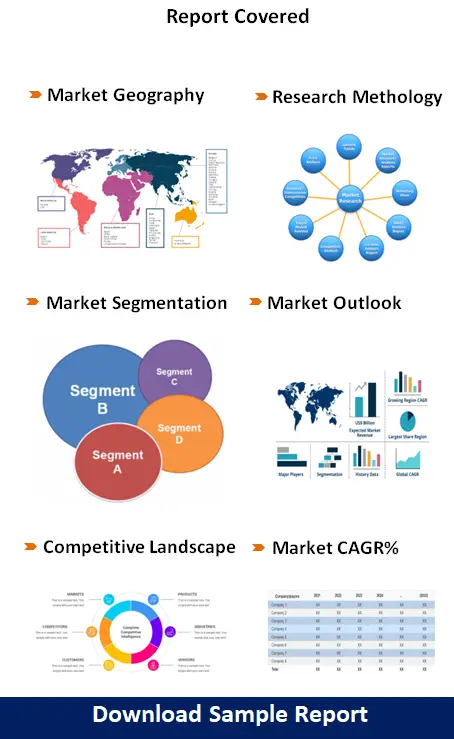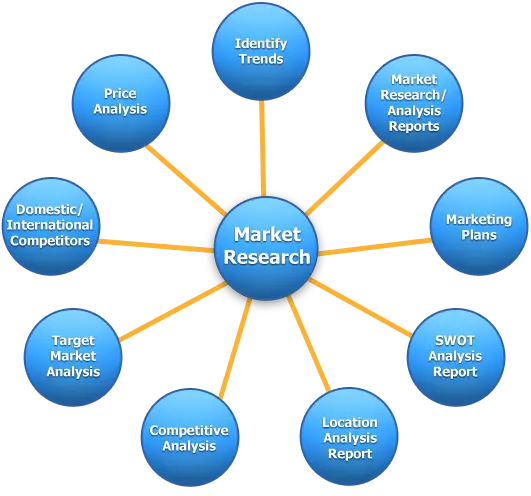Automatic Doors Market Growth CAGR Overview
According to research by Infinitive Data Research, the global Automatic Doors Market size was valued at USD 7.6 Bln (billion) in 2024 and is Calculated to reach USD 10.1 Bln (billion) by the end of 2032, growing at an anticipated compound annual growth rate (CAGR) of 6.3% during the forecast period 2024 to 2032. This projected growth is driven by its increasing adoption across Chemical & Materials industries such as Building Wall, Building RoofThe market dynamics of the automatic doors sector are shaped by rapid urbanization and the modernization of commercial spaces. In major urban centers, high-traffic venues such as shopping malls, airports, and office complexes drive the demand for automated entry systems that not only enhance convenience but also promote energy efficiency and security. This evolving landscape is pushing manufacturers to continuously innovate and adapt to meet stringent industry standards and user expectations.
Shifts in consumer behavior have also played a significant role. With a growing emphasis on hygiene and contactless operations—especially in the aftermath of global health concerns—end users and facility managers are increasingly favoring automatic door systems. These systems reduce physical contact and minimize the spread of contaminants while offering smoother and more efficient access control solutions. As a result, even traditional markets are witnessing a paradigm shift toward automated solutions.
Technological advancements are further fueling market dynamics. Innovations in sensor technology, artificial intelligence, and Internet of Things (IoT) integration have led to smarter, more responsive door systems that can be tailored to diverse operational environments. The ability to integrate with building management systems and access control networks is driving adoption in sectors that require high levels of security and operational efficiency. Manufacturers are investing in research and development to create systems that are not only reliable but also adaptable to evolving market needs.
Economic factors, including global economic recovery and increased capital investments in infrastructure, have also had a strong impact on market dynamics. Governments and private enterprises alike are prioritizing modernization projects, leading to an uptick in the installation of automated doors across various sectors. This economic push is coupled with a competitive pricing environment that has made advanced automatic door systems more accessible to a wider range of end users.
Finally, regulatory frameworks and safety standards are continually evolving, compelling manufacturers to ensure that their products meet or exceed the required benchmarks. These regulatory pressures have accelerated the adoption of advanced safety features and energy-efficient designs. In turn, this has reinforced the market’s momentum, as companies strive to differentiate their offerings while ensuring compliance with both domestic and international standards.
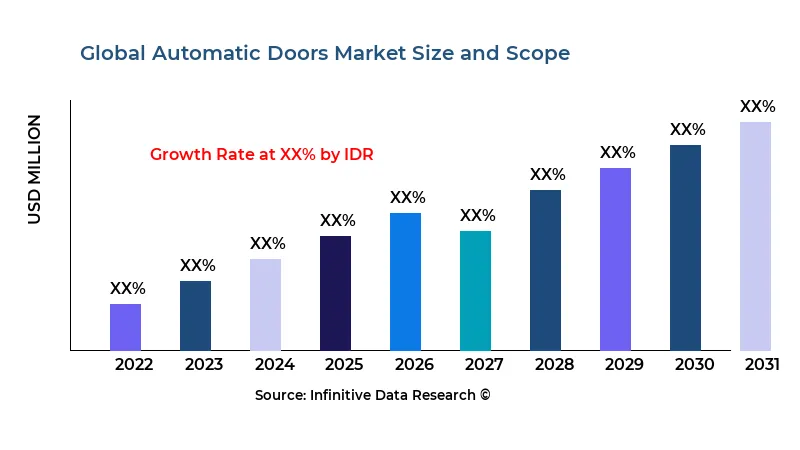
>>> Understand The Key Trends Shaping This Market:- Download PDF Sample
Automatic Doors Market Growth Factors
Several key growth factors are driving the expansion of the automatic doors market. First, the rapid pace of urbanization and the concurrent need for efficient, high-traffic access solutions in public infrastructure have created a strong demand for automated systems. With urban centers expanding, both commercial and residential buildings are increasingly integrating these systems to manage foot traffic and enhance safety. This growth is supported by rising disposable incomes and an increased focus on enhancing user convenience in everyday environments.
Another important factor is the rising trend of smart buildings and the integration of advanced technologies into infrastructure. As buildings become more connected through IoT and smart sensor networks, the demand for automatic door systems that can seamlessly integrate with other building management solutions is surging. This technological convergence is fostering innovation in product features, such as energy-saving mechanisms and enhanced security protocols, which further propel market growth.
The emphasis on sustainability and energy efficiency is also a significant driver. Modern automatic door systems are designed to minimize energy waste by operating only when needed and by incorporating energy recovery features. These eco-friendly attributes appeal to businesses and institutions striving to reduce their carbon footprint while lowering operating costs. As global environmental standards become stricter, the push for sustainable building solutions is expected to continue bolstering the automatic doors market.
Furthermore, the competitive landscape is intensifying as new entrants and established players invest in research and development. This competition is resulting in a broader range of products tailored to diverse end-user requirements, from high-security installations to cost-effective solutions for small businesses. The expanding product portfolio not only caters to varied market segments but also encourages further adoption by enhancing the overall value proposition of automated door systems.
Lastly, the growth of global trade and the expansion of international business activities have had a substantial influence on market growth. As companies increasingly establish operations in new geographical areas, there is a corresponding need for standardized, reliable access control systems that support both security and operational efficiency. This global expansion strategy is driving manufacturers to scale up production and broaden their market presence, thereby reinforcing the upward trajectory of the automatic doors market.
Market Analysis By Competitors
- Kingspan
- Metecno
- Isopan
- NCI Building Systems
- TATA Steel
- ArcelorMittal
- Raycore
- Premier SIPs
- Extreme Panel Technologies, Inc
- Insulspan
By Product Type
- EPS Panels
- PUR/PIR Panels
- Glass Wool Panels
- Others
By Application
- Building Wall
- Building Roof
>>> Understand The Key Trends Shaping This Market:- Understand The Key Trends Shaping This Market:-
Automatic Doors Market Segment Analysis
By Distribution Channel:
The automatic doors market is segmented by distribution channels into direct sales, dealer networks, and online platforms. Direct sales often cater to large-scale commercial or governmental projects where customization and dedicated support are key. In contrast, dealer networks provide localized support and a more personalized sales approach, ensuring that the products are tailored to regional needs. Additionally, the rising trend of online sales channels is making it easier for small and medium-sized enterprises to access and purchase automated door systems, thereby widening the market reach. This multi-channel approach allows manufacturers to balance cost efficiency with market penetration, ensuring that diverse customer segments are effectively served through a combination of traditional and digital sales strategies.
By Compatibility:
The market segmentation by compatibility covers systems designed for retrofitting existing door systems as well as those integrated into new constructions. Retrofitting solutions are becoming increasingly popular as businesses seek to upgrade their facilities without undergoing complete structural overhauls. New construction projects, on the other hand, offer opportunities to integrate fully automated and state-of-the-art door systems from the ground up. This dual focus on both new installations and upgrades supports a versatile market approach that caters to a wide range of infrastructural requirements. Manufacturers are tailoring their product designs to meet the specific compatibility demands of different environments, whether in historic buildings requiring subtle modifications or modern structures that demand cutting-edge automation and integration.
By Price Range:
When it comes to price range segmentation, automatic door systems are offered in economy, mid-range, and premium categories. The economy segment is characterized by cost-effective solutions that offer basic automation features, making them attractive to small businesses or budget-conscious institutions. Mid-range products typically incorporate additional features such as enhanced security, energy efficiency, and better integration with building management systems, thereby appealing to a broader market segment. The premium segment is targeted at high-end commercial installations and specialized applications that require advanced functionalities, superior performance, and robust design. This price segmentation allows manufacturers to address a diverse customer base, balancing affordability with innovation and high performance.
By Product Type:
The product type segmentation in the automatic doors market includes sliding, swinging, revolving, and specialized custom door systems. Sliding doors are widely used in retail and commercial environments due to their space-saving design and ease of use. Swinging doors offer versatility and are commonly employed in areas where traffic flow control is essential. Revolving door systems are highly valued in large commercial complexes and high-rise buildings for their energy efficiency and ability to manage large volumes of people. Custom door systems, which can be tailored to specific security or aesthetic requirements, serve niche markets such as healthcare facilities, government buildings, and luxury residential complexes. Each product type is designed to meet distinct operational requirements and usage scenarios, ensuring that the market remains diverse and responsive to the evolving demands of different sectors.
| REPORT ATTRIBUTES | DETAILS |
|---|---|
| Study Period |
2019-2032 |
| Base Year |
2023 |
| Forecast Period |
2024-2032 |
| Historical Period |
2019-2022 |
| Unit |
Value (USD Billion) |
| Key Companies Profiled |
Kingspan, Metecno, Isopan, NCI Building Systems, TATA Steel, ArcelorMittal, Raycore, Premier SIPs, Extreme Panel Technologies, Inc, Insulspan |
| Segments Covered |
By Product |
| Customization Scope |
Free report customization (equivalent to up to 3 analyst working days) with purchase. Addition or alteration to country, regional and segment scope |
>>> Overview of Market Analysis:- Download PDF Sample
Automatic Doors Market Regional Analysis
The automatic doors market exhibits robust growth across North America, driven by extensive modernization of commercial infrastructures, increased security demands, and the growing trend towards smart building technologies. In this region, the convergence of high consumer expectations and strict building codes is fostering an environment where automatic door systems are essential for ensuring both operational efficiency and compliance. North American markets are characterized by a strong presence of well-established industry players and continuous technological innovation, which further stimulates market demand.
Europe presents a mature market with a high rate of adoption due to stringent safety regulations and a significant focus on energy efficiency. European countries are increasingly investing in retrofitting older buildings with modern access control systems, driven by the need to improve operational efficiencies and meet environmental standards. The region’s emphasis on sustainable urban development has led to a steady demand for automatic doors that can be integrated with green building technologies. This trend is supported by favorable government policies and incentives aimed at reducing energy consumption and enhancing public safety.
In Asia-Pacific, rapid urbanization, industrial growth, and infrastructural modernization are key drivers of the automatic doors market. The region has seen significant investments in commercial and residential construction, prompting a surge in the adoption of automated door systems. Countries like China, India, and Japan are leading the way, with urban centers expanding rapidly and an increasing need for efficient and secure access control systems. This dynamic market is also influenced by local manufacturers who are rapidly innovating to meet both domestic and export demands, further fueling growth in the region.
The Middle East and Africa are emerging as promising markets, thanks to ongoing infrastructural developments and a growing focus on security and energy efficiency. In these regions, large-scale projects in commercial, healthcare, and hospitality sectors are driving the demand for advanced automatic door solutions. The market here is characterized by an influx of international investments and partnerships, as well as local initiatives aimed at modernizing public and private infrastructures. Despite challenges such as economic fluctuations and regulatory hurdles, the region is poised for steady growth as urbanization continues to accelerate.
Latin America is gradually embracing the benefits of automatic door systems, particularly in rapidly expanding urban centers. The region is witnessing a transformation in its commercial and residential infrastructures, with a noticeable shift toward modernizing legacy systems. Increased awareness about safety and energy efficiency is leading businesses to invest in automated solutions. Furthermore, regional collaborations and the entry of global players are catalyzing market growth. As Latin America continues to develop its infrastructural capabilities, the adoption of advanced door automation technologies is expected to gain further momentum.
global Automatic Doors market revenue (usd million) comparison by players 2024-2032
| Company/players | 2021 | 2022 | 2023 | 2024 | ... | (2032) |
|---|---|---|---|---|---|---|
| Kingspan | XX | XX | XX | XX | XX | XX |
| Metecno | XX | XX | XX | XX | XX | XX |
| Isopan | XX | XX | XX | XX | XX | XX |
| NCI Building Systems | XX | XX | XX | XX | XX | XX |
| TATA Steel | XX | XX | XX | XX | XX | XX |
| ArcelorMittal | XX | XX | XX | XX | XX | XX |
| Raycore | XX | XX | XX | XX | XX | XX |
| Premier SIPs | XX | XX | XX | XX | XX | XX |
| Extreme Panel Technologies, Inc | XX | XX | XX | XX | XX | XX |
| Insulspan | XX | XX | XX | XX | XX | XX |
| Total | XX | XX | XX | XX | XX | XX |
global Automatic Doors market revenue (usd million) comparison by product type 2024-2032
Product Type
2023
2024
...
2032
CAGR%(2024-32)
EPS Panels
XX
XX
XX
XX
XX
PUR/PIR Panels
XX
XX
XX
XX
XX
Glass Wool Panels
XX
XX
XX
XX
XX
Others
XX
XX
XX
XX
XX
Total
XX
XX
XX
XX
XX
| Product Type | 2023 | 2024 | ... | 2032 | CAGR%(2024-32) |
|---|---|---|---|---|---|
| EPS Panels | XX | XX | XX | XX | XX |
| PUR/PIR Panels | XX | XX | XX | XX | XX |
| Glass Wool Panels | XX | XX | XX | XX | XX |
| Others | XX | XX | XX | XX | XX |
| Total | XX | XX | XX | XX | XX |
global Automatic Doors market revenue (usd million) comparison by application 2024-2032
Application
2023
2024
...
2032
CAGR%(2024-32)
Building Wall
XX
XX
XX
XX
XX
Building Roof
XX
XX
XX
XX
XX
Total
XX
XX
XX
XX
XX
| Application | 2023 | 2024 | ... | 2032 | CAGR%(2024-32) |
|---|---|---|---|---|---|
| Building Wall | XX | XX | XX | XX | XX |
| Building Roof | XX | XX | XX | XX | XX |
| Total | XX | XX | XX | XX | XX |
>>> Market Understand Through Graph And Chart:- Download PDF Sample
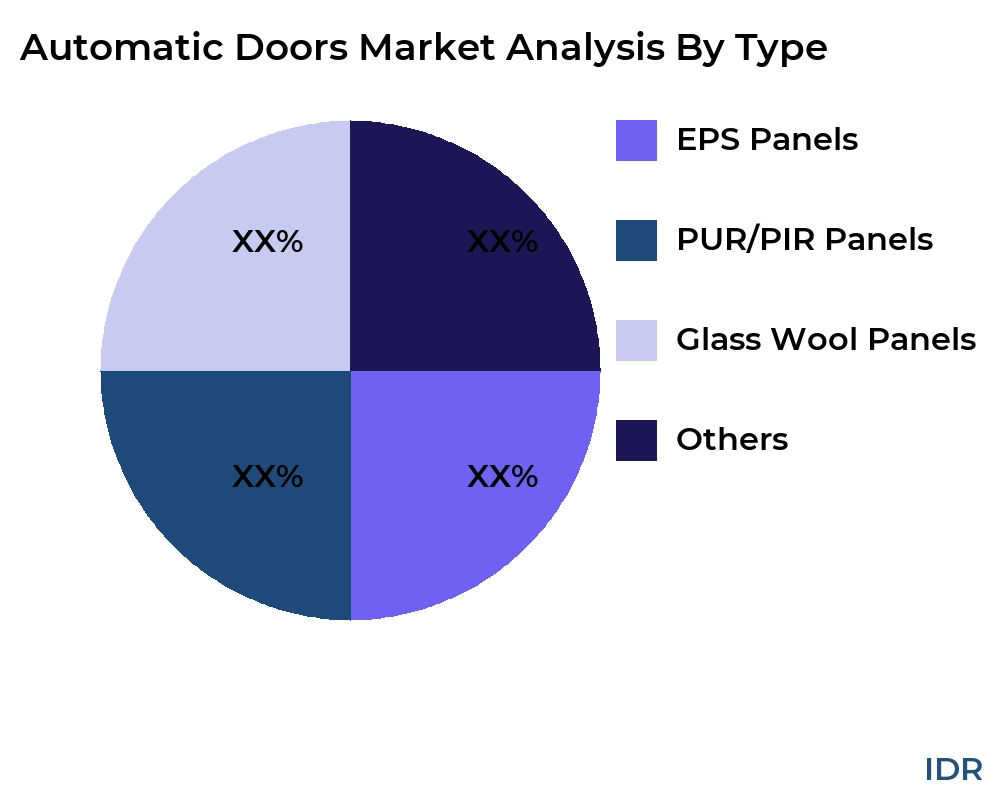
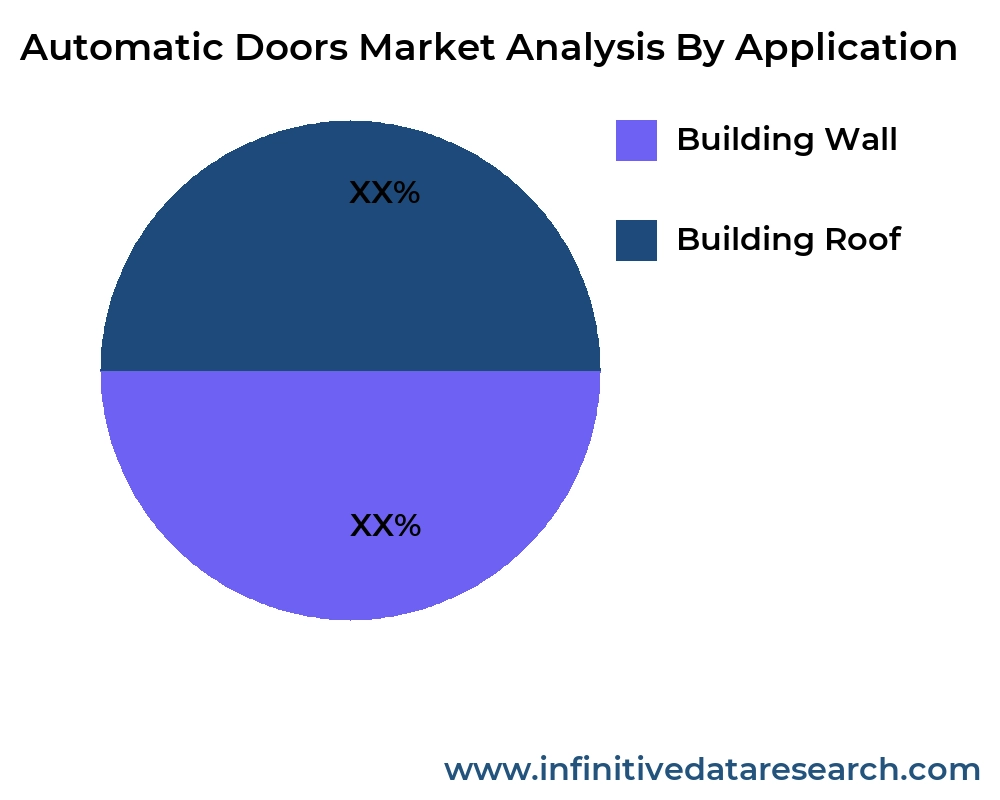
Automatic Doors Market Competitive Insights
The competitive landscape in the automatic doors market is both dynamic and intensifying, marked by the presence of several global players who continually invest in technology and innovation. These companies are striving to differentiate themselves by offering enhanced product features, such as advanced sensor technology, improved energy efficiency, and greater integration with smart building systems. As a result, the competition is not only based on pricing but also on the value proposition delivered through innovative solutions that meet diverse user needs.
A key competitive factor is the ability of companies to tailor their products to specific market segments, whether it is for large commercial complexes, high-end residential buildings, or public infrastructure projects. Customization and flexibility have become major points of differentiation, as manufacturers increasingly focus on developing systems that are adaptable to varying building requirements. This trend has led to a surge in product diversification, where companies are extending their product lines to cover a wide range of applications, from retrofitting older installations to deploying state-of-the-art integrated solutions.
Mergers, acquisitions, and strategic partnerships are also prominent within this market, as companies seek to consolidate their positions and expand their geographical reach. These strategic moves help firms to harness synergies in research and development, reduce production costs, and gain access to new distribution networks. The ongoing consolidation in the market is indicative of a broader trend where scale and efficiency are critical for maintaining a competitive edge in a rapidly evolving technological environment.
Customer service and after-sales support are becoming increasingly significant in differentiating market players. As installations become more complex, the demand for reliable technical support and maintenance services is rising. Companies that can offer comprehensive support packages, timely maintenance, and innovative remote monitoring solutions are gaining the trust of clients, thereby reinforcing their market positions. This emphasis on post-sale services is critical in fostering long-term customer relationships and enhancing brand loyalty in an increasingly competitive marketplace.
Lastly, pricing strategies and cost optimization continue to be at the forefront of competitive insights. With the market expanding into various economic segments, manufacturers are under pressure to offer products that provide a balance between performance and cost. This has led to a continuous refinement of production processes and the adoption of advanced manufacturing techniques. The ability to deliver high-quality automatic door systems at competitive prices is a decisive factor that is shaping the competitive dynamics of the market, driving both innovation and market penetration.
Automatic Doors Market Competitors
United States:
• Stanley Access Technologies
• Adams Rite
• ASSA ABLOY (US Division)
• Record USA
• Boon Edam USA
Germany:
• Dormakaba
• ASSA ABLOY Germany
• Hörmann
• Ditec
• Egger
Japan:
• TOSTEM
• Hokuriku
• YKK AP
• Sekisui
• Fujinami
China:
• Jiangsu New Long Door
• Xiamen Winton
• Guangzhou Xinming
• Shenzhen DoorTech
• Zhejiang Shuangjia
India:
• Godrej Security Solutions
• Orient Automatic Doors
• Kalyan Automatic Systems
• Mahindra Doors
• Titan Automatic Doors
United Kingdom:
• Boon Edam UK
• ASSA ABLOY UK
• Dormakaba UK
• Access Technologies UK
• Newman Access Solutions
Automatic Doors Market Top Competitors
ASSA ABLOY:
A global leader in access solutions, ASSA ABLOY is known for its robust portfolio of products that span from traditional locks to advanced automated door systems. The company has established itself as a benchmark for quality and innovation. With extensive R&D investments and a worldwide distribution network, ASSA ABLOY maintains a leading position in the market by continually adapting to technological advancements and meeting the evolving security and operational needs of its diverse clientele.
Dormakaba:
Dormakaba is recognized as a major player in the automated doors segment, providing state-of-the-art access control and security solutions. The company leverages a strong focus on innovation to develop products that are not only technologically advanced but also energy efficient. Its global presence and comprehensive service offerings have made Dormakaba a trusted partner for commercial and residential projects alike, ensuring high reliability and customer satisfaction.
Stanley Access Technologies:
Specializing in automated door systems, Stanley Access Technologies has carved out a niche by offering products that combine cutting-edge technology with durability. The company’s commitment to quality and its ability to customize solutions for various applications have solidified its reputation in the market. Stanley Access Technologies is frequently chosen by high-profile clients for its consistent performance and responsive service support.
Boon Edam:
Boon Edam stands out as a leading manufacturer of revolving, sliding, and swing automatic door systems. Renowned for its innovative designs and commitment to security, the company has a well-established market presence globally. Boon Edam’s focus on creating aesthetically pleasing yet highly functional products has enabled it to secure major contracts in sectors such as retail, transportation, and commercial real estate, reinforcing its competitive advantage.
Record USA:
Record USA is a prominent supplier in the automatic doors market, known for delivering reliable and efficient door solutions. With a strong emphasis on quality control and technological innovation, Record USA has consistently met the high expectations of its clients. Its product portfolio is widely used in various sectors, making it a significant player in both retrofit projects and new construction, and its reputation for durability has helped it maintain a strong market position.
Tormax:
Tormax has earned recognition for its innovative approach in designing automated door systems that prioritize energy efficiency and operational reliability. The company’s products are widely adopted in high-traffic areas such as airports, hospitals, and commercial complexes. Tormax’s continuous investments in technology and user-focused design have contributed to its steady growth and a solid foothold in the competitive landscape of automatic doors.
Allegion:
Allegion, with its comprehensive suite of access control and security solutions, has successfully integrated automated door systems into its product offerings. The company’s focus on safety and innovation has positioned it as a leader in providing secure and efficient access solutions. Through strategic global expansion and robust customer support services, Allegion continues to influence market trends and drive competitive advancements in the automatic doors sector.
Schindler:
Although primarily recognized for its elevator and escalator solutions, Schindler has expanded its expertise to include automated door systems that complement its vertical transportation portfolio. The company leverages its extensive experience in building access and safety systems to deliver integrated solutions that enhance overall building efficiency. Schindler’s commitment to research and innovation has helped it carve a niche in markets where comprehensive access solutions are highly valued.
HID Global:
HID Global has built a reputation for advanced access control and security solutions that extend into automated door technologies. The company focuses on integrating smart security features into its products, ensuring robust and user-friendly access management systems. HID Global’s innovative approach, coupled with its strong market presence, has enabled it to remain competitive by addressing the evolving needs of both commercial and high-security applications.
Hajoca Doors:
Hajoca Doors has established itself as a key player in the niche segment of automated door systems, particularly in markets that demand high reliability and specialized design. The company’s focus on delivering durable products combined with efficient operational performance has earned it a loyal customer base. With a strong emphasis on research and development, Hajoca Doors continuously innovates to meet industry standards and customer expectations, ensuring its competitive position in the global market.
The report provides a detailed analysis of the Automatic Doors market across various regions, highlighting the unique market dynamics and growth opportunities in each region.
- US
- Canada
- Mexico
- UK
- Germany
- France
- Italy
- Russia
- Spain
- Switzerland
- Austria
- Belgium
- Rest of Europe
- China
- Japan
- South Korea
- Indonesia
- Vietnam
- Philippines
- Australia
- Thailand
- Singapore
- Rest of APAC
- UAE
- Saudi Arabia
- Egypt
- South Africa
- Israel
- Rest of MEA
- Brazil
- Argentina
- Rest of Latin America
>>> Need A Different Region Or Segment? Download PDF Sample
Key Takeaways
- The global Automatic Doors market is expected to grow significantly from 2024 to 2032, driven by technological advancements, increasing demand, and government investments in urbanization.
- The market is characterized by a diverse range of manufacturers, product types, and applications, catering to different consumer needs and preferences.
- Regional insights highlight the unique market dynamics and growth opportunities in various regions, including North America, Europe, Asia-Pacific, Latin America, and the Middle East & Africa.
- The competitive landscape features key players who have created a dynamic and diverse market environment through collaborations, mergers and acquisitions, and innovative product developments.
- Market trends such as technological advancements, sustainability, customization, and digital transformation are shaping the growth and development of the Automatic Doors market.
- Despite the positive outlook, the market faces challenges such as regulatory compliance, high initial investment costs, and economic uncertainties.
- The report provides comprehensive coverage of market size, market share, growth factors, and strategic insights to help businesses navigate the dynamic Automatic Doors market and achieve long-term success.
By leveraging the information provided in this report, businesses can develop effective strategies, address market challenges, and capitalize on growth opportunities to ensure sustainable growth and long-term success in the global Automatic Doors market.
- Introduction
- Objectives of the Study
- Market Definition
- Research Scope
- Currency
- Key Target Audience
- Research Methodology and Assumptions
- Executive Summary
- Premium Insights
- Porter’s Five Forces Analysis
- Value Chain Analysis
- Top Investment Pockets
- Industry Trends
- Market Dynamics
- Market Evaluation
- Drivers
- Restraints
- Opportunities
- Challenges
- Global Automatic Doors Market Analysis and Projection, By Companies
- Segment Overview
- Kingspan
- Metecno
- Isopan
- NCI Building Systems
- TATA Steel
- ArcelorMittal
- Raycore
- Premier SIPs
- Extreme Panel Technologies, Inc
- Insulspan
- Global Automatic Doors Market Analysis and Projection, By Type
- Segment Overview
- EPS Panels
- PUR/PIR Panels
- Glass Wool Panels
- Others
- Global Automatic Doors Market Analysis and Projection, By Application
- Segment Overview
- Building Wall
- Building Roof
- Global Automatic Doors Market Analysis and Projection, By Regional Analysis
- North America
- US
- Canada
- Mexico
- Europe
- UK
- Germany
- France
- Italy
- Russia
- Spain
- Switzerland
- Austria
- Belgium
- Rest of Europe
- Asia Pacific
- China
- Japan
- South Korea
- Indonesia
- Vietnam
- Philippines
- Australia
- Thailand
- Singapore
- Rest of APAC
- Middle East
- UAE
- Saudi Arabia
- Egypt
- South Africa
- Israel
- Rest of MEA
- Latin America
- Brazil
- Argentina
- Rest of Latin America
- Global Automatic Doors Market-Competitive Landscape
- Overview
- Market Share of Key Players in the Automatic Doors Market
- Global Company Market Share
- North America Company Market Share
- Europe Company Market Share
- APAC Company Market Share
- Competitive Situations and Trends
- Coverage Launches and Developments
- Partnerships, Collaborations, and Agreements
- Mergers & Acquisitions
- Expansions
- Company Profiles
- Kingspan
- Business Overview
- Company Snapshot
- Company Market Share Analysis
- Company Coverage Portfolio
- Recent Developments
- SWOT Analysis
- Metecno
- Business Overview
- Company Snapshot
- Company Market Share Analysis
- Company Coverage Portfolio
- Recent Developments
- SWOT Analysis
- Isopan
- Business Overview
- Company Snapshot
- Company Market Share Analysis
- Company Coverage Portfolio
- Recent Developments
- SWOT Analysis
- NCI Building Systems
- Business Overview
- Company Snapshot
- Company Market Share Analysis
- Company Coverage Portfolio
- Recent Developments
- SWOT Analysis
- TATA Steel
- Business Overview
- Company Snapshot
- Company Market Share Analysis
- Company Coverage Portfolio
- Recent Developments
- SWOT Analysis
- ArcelorMittal
- Business Overview
- Company Snapshot
- Company Market Share Analysis
- Company Coverage Portfolio
- Recent Developments
- SWOT Analysis
- Raycore
- Business Overview
- Company Snapshot
- Company Market Share Analysis
- Company Coverage Portfolio
- Recent Developments
- SWOT Analysis
- Premier SIPs
- Business Overview
- Company Snapshot
- Company Market Share Analysis
- Company Coverage Portfolio
- Recent Developments
- SWOT Analysis
- Extreme Panel Technologies, Inc
- Business Overview
- Company Snapshot
- Company Market Share Analysis
- Company Coverage Portfolio
- Recent Developments
- SWOT Analysis
- Insulspan
- Business Overview
- Company Snapshot
- Company Market Share Analysis
- Company Coverage Portfolio
- Recent Developments
- SWOT Analysis
List of Table
- Drivers of Global Automatic Doors Market: Impact Analysis
- Restraints of Global Automatic Doors Market: Impact Analysis
- Global Automatic Doors Market, By Technology, 2023-2032(USD Billion)
- global EPS Panels, Automatic Doors Market, By Region, 2023-2032(USD Billion)
- global PUR/PIR Panels, Automatic Doors Market, By Region, 2023-2032(USD Billion)
- global Glass Wool Panels, Automatic Doors Market, By Region, 2023-2032(USD Billion)
- global Others, Automatic Doors Market, By Region, 2023-2032(USD Billion)
- global Building Wall, Automatic Doors Market, By Region, 2023-2032(USD Billion)
- global Building Roof, Automatic Doors Market, By Region, 2023-2032(USD Billion)
List of Figures
- Global Automatic Doors Market Segmentation
- Automatic Doors Market: Research Methodology
- Market Size Estimation Methodology: Bottom-Up Approach
- Market Size Estimation Methodology: Top-down Approach
- Data Triangulation
- Porter’s Five Forces Analysis
- Value Chain Analysis
- Top investment pocket in the Automatic Doors Market
- Top Winning Strategies, 2023-2032
- Top Winning Strategies, By Development, 2023-2032(%)
- Top Winning Strategies, By Company, 2023-2032
- Moderate Bargaining power of Buyers
- Moderate Bargaining power of Suppliers
- Moderate Bargaining power of New Entrants
- Low threat of Substitution
- High Competitive Rivalry
- Restraint and Drivers: Automatic Doors Market
- Automatic Doors Market Segmentation, By Technology
- Automatic Doors Market For Live Attenuated, By Region, 2023-2033 ($ Billion)
- Global Automatic Doors Market, By Technology, 2023-2032(USD Billion)
- global EPS Panels, Automatic Doors Market, By Region, 2023-2032(USD Billion)
- global PUR/PIR Panels, Automatic Doors Market, By Region, 2023-2032(USD Billion)
- global Glass Wool Panels, Automatic Doors Market, By Region, 2023-2032(USD Billion)
- global Others, Automatic Doors Market, By Region, 2023-2032(USD Billion)
- global Building Wall, Automatic Doors Market, By Region, 2023-2032(USD Billion)
- global Building Roof, Automatic Doors Market, By Region, 2023-2032(USD Billion)
- Kingspan: Net Sales, 2023-2033 ($ Billion)
- Kingspan: Revenue Share, By Segment, 2023 (%)
- Kingspan: Revenue Share, By Region, 2023 (%)
- Metecno: Net Sales, 2023-2033 ($ Billion)
- Metecno: Revenue Share, By Segment, 2023 (%)
- Metecno: Revenue Share, By Region, 2023 (%)
- Isopan: Net Sales, 2023-2033 ($ Billion)
- Isopan: Revenue Share, By Segment, 2023 (%)
- Isopan: Revenue Share, By Region, 2023 (%)
- NCI Building Systems: Net Sales, 2023-2033 ($ Billion)
- NCI Building Systems: Revenue Share, By Segment, 2023 (%)
- NCI Building Systems: Revenue Share, By Region, 2023 (%)
- TATA Steel: Net Sales, 2023-2033 ($ Billion)
- TATA Steel: Revenue Share, By Segment, 2023 (%)
- TATA Steel: Revenue Share, By Region, 2023 (%)
- ArcelorMittal: Net Sales, 2023-2033 ($ Billion)
- ArcelorMittal: Revenue Share, By Segment, 2023 (%)
- ArcelorMittal: Revenue Share, By Region, 2023 (%)
- Raycore: Net Sales, 2023-2033 ($ Billion)
- Raycore: Revenue Share, By Segment, 2023 (%)
- Raycore: Revenue Share, By Region, 2023 (%)
- Premier SIPs: Net Sales, 2023-2033 ($ Billion)
- Premier SIPs: Revenue Share, By Segment, 2023 (%)
- Premier SIPs: Revenue Share, By Region, 2023 (%)
- Extreme Panel Technologies, Inc: Net Sales, 2023-2033 ($ Billion)
- Extreme Panel Technologies, Inc: Revenue Share, By Segment, 2023 (%)
- Extreme Panel Technologies, Inc: Revenue Share, By Region, 2023 (%)
- Insulspan: Net Sales, 2023-2033 ($ Billion)
- Insulspan: Revenue Share, By Segment, 2023 (%)
- Insulspan: Revenue Share, By Region, 2023 (%)
Infinitive Data Research provides comprehensive market research, offering in-depth market analysis to help companies understand their target market and industry competition. This research predicts the market acceptance of your brand and products, ensuring informed decision-making for business success.
Competitor Analysis in the Automatic Doors Industry
Conducting a competitor analysis involves identifying competitors within the Automatic Doors industry and studying their various marketing strategies. This comparative data allows you to assess your company's strengths and weaknesses relative to competitors, providing insights to enhance your market position.
Importance of Continuous Market Research
Consistently conducting market research is essential for minimizing risk at every stage of business operations. Automatic Doors market research enables you to collect qualitative and quantitative data, which, when properly analyzed, leads to wise decisions that align with user and customer needs. Below are some crucial lessons learned through the Automatic Doors market research process:

Key Dimensions of Automatic Doors Market Analysis
- Trend and Pattern Identification: Analyzing data to spot market trends and patterns.
- Pricing Analysis: Assessing keyword pricing strategies.
- Actionable Insights: Implementing insights derived from data analysis.
- Market Potential: Evaluating the potential of the Automatic Doors market.
- Competitor Analysis: Studying competitors' strategies and performance.
- Location Analysis: Assessing optimal locations for market penetration.
- Distribution Channels Analysis: Evaluating the effectiveness of distribution channels.
- Market Size and Growth Rate: Measuring market size and growth potential.
- Market Profitability: Assessing profitability prospects.
- Key Success Factors: Identifying critical factors for success.
- Cost Structure: Understanding the cost structure within the Automatic Doors industry.
Target Audience for the Report
This report is valuable for a diverse audience, including:
- Automatic Doors Market Manufacturers: To understand market dynamics and enhance production strategies.
- Investors and Financing Companies: To assess investment opportunities and risks.
- Automatic Doors Market Suppliers: To identify market demands and supply chain efficiencies.
Necessity of the Report
Making Crucial Business Decisions
Understanding the Automatic Doors market, competition, and industry landscape is vital for making informed business decisions. Without current and relevant market research, decisions may be based on outdated or irrelevant information, potentially harming the business.
Securing Investment Funds
Attracting investors requires demonstrating thorough market research. Investors need assurance that you understand the sector, current and potential competition, and whether your idea addresses a market need.
Identifying New Business Opportunities
Automatic Doors market research goes beyond understanding trends and consumer behavior. It identifies new revenue streams and opportunities for business pivots. These insights can lead to strategic changes in the business model, promoting growth and adapting to market challenges.
Avoiding Business Failures
Market research also plays a crucial role in risk mitigation. It can reveal when not to pursue certain actions, saving the company from potential losses in revenue, brand image, and more. This proactive approach is often overlooked but is essential for long-term success.
Conclusion
Infinitive Data Research's comprehensive Automatic Doors market research provides critical insights for making solid business decisions, securing investments, identifying new opportunities, and avoiding potential failures. Understanding market dynamics through continuous research ensures your company remains competitive and thrives in the Automatic Doors industry.

